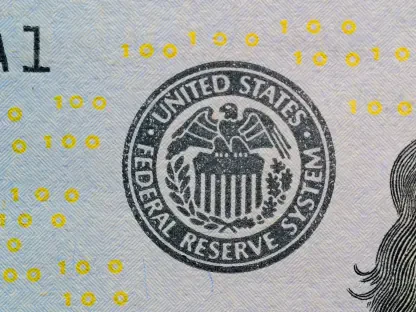Currency markets are intricately tied to the pulse of major global economies, with macroeconomic factors exerting considerable influence on exchange rates and market dynamics. Among the primary players, currencies such as the U.S. dollar, euro, and British pound are notably sensitive to macroeconomic data, driving shifts in investor sentiment and perceptions of economic health. Amid the current economic landscape, understanding the interplay between macroeconomic trends and currency movements is crucial for stakeholders in the financial markets aiming to navigate potential volatility with informed strategies.
U.S. Dollar Dynamics
Sensitivity to Macroeconomic Data
The U.S. dollar, a benchmark currency in global trading, has consistently shown its responsiveness to macroeconomic indicators. Recent data highlighted the dollar’s sensitivity, particularly in employment statistics, with unemployment benefits applications dipping to levels unseen since mid-April. This drop underscores the robustness of the American job market, contributing to an optimistic portrayal of the nation’s economic resilience amidst ongoing challenges. Despite the encouraging jobs data, the dollar index often stagnated or declined during trading sessions, implying broader market apprehension fueled by prevailing trade policy uncertainties and tariff discussions impacting trading sentiment.
The dollar’s performance underscores the complex relationship between positive economic indicators and investor sentiment. Despite strong employment figures, market dynamics reflected cautiousness, with investors deterred by unresolved trade concerns that continue to overshadow otherwise positive macroeconomic reports. The resulting range-bound nature of the dollar suggests its lack of clear directional movement, a phenomenon reflecting the ongoing tug-of-war between economic fundamentals and geopolitical tensions. As such, the impact of macroeconomic announcements on the dollar is now moderated by broader market narratives that prevent decisive shifts absent overwhelming data.
Volatility from Changes in Data
During periods of changing macroeconomic conditions, the U.S. dollar has witnessed significant volatility, reflecting market participants’ reactions to economic releases that alter expectations for currency valuation. Throughout this period, the dollar began trading with stability but weakened as the Richmond Fed’s manufacturing index and existing home sales numbers fell short of market anticipations. While positive unemployment data offered a temporary bolstering effect, new home sales figures again hindered sustained gains, leading to a volatile trajectory where macroeconomic data both shapes expectations and tempers potential rallies.
In essence, the fluctuating fortunes of the U.S. dollar illustrate the cyclical interplay between different macroeconomic indicators and investor behavior, where varying releases can simultaneously bolster or dampen confidence. This reflects a market environment where macroeconomic trends alone do not guarantee decisive movements without alignment in investor perceptions. To this end, U.S. dollar traders must remain attuned to the dual impact of momentary economic data and overarching market fears that shape trading ranges and potential directional shifts.
Euro Resilience and Challenges
Expectations and Market Reactions
The euro, amid global monetary systems, continues to showcase its resilience in the face of evolving economic pressures and central bank policy measures. While the European Central Bank (ECB) chose to maintain interest rates, the euro market perceived a slightly hawkish stance that buoyed the currency against speculative pressures. Positive developments like the uptick in the eurozone’s Composite Purchasing Managers’ Index (PMI) provided modest economic momentum, creating a scenario where the euro resists immediate downside risks, with rate-cut expectations being priced out for upcoming meetings.
Throughout the current market climate, these expectations bode well for the euro, providing critical support in periods of global financial uncertainty. Coupled with improving PMI indicators, the euro’s performance indicates a stabilized position fueled by tempered rate-cut anticipations and aligning market expectations. The resilience demonstrated by the euro amidst these conditions suggests a capacity to withstand adverse pressures, contingent upon favorable economic narratives that inform market sentiment.
Impact of Trade Policies on Stability
Trade policy disruptions, historically volatile euro, can often see shifts driven by wider geopolitical influences. Recent discourse surrounding tariff reductions and possible U.S.-EU trade agreements have been crucial to market sentiment, providing potential avenues for strengthening euro performance by tempering the aggressive position of the dollar. In periods where trade uncertainties are mitigated, the euro benefits significantly from a more stable trading environment, granting investors increased confidence in its long-term viability against the dollar.
The favorable prospects stemming from improved trade dialogue stand to bolster euro performance against the dollar, particularly if agreements are reached that lessen the abrasive impact of tariffs. As such, these geopolitical trends form an essential component of the broader macroeconomic discourse, potentially enhancing the euro’s market positioning over the coming months. Nevertheless, sustained stability hinges on the successful navigation of economic conditions that align both macroeconomic data and policy resolutions into cohesive directional movements.
British Pound’s Economic Pressures
Inflation and Employment Challenges
The British pound, a critical currency within the international trading system, faces its own distinct economic trials, highlighting its vulnerability amid sluggish employment and inflationary pressures. June’s rebound in UK retail sales offered a glimmer of hope after a significant May decline but ultimately failed to meet anticipated growth figures. This was compounded by softer-than-expected PMI numbers that painted a cautious picture of the service sector—a key pillar of the UK economy—especially amid rising payroll taxes and national wage constraints that hinder employment expansion.
As inflationary forces persist, particularly within the food and hospitality sectors, the Bank of England (BoE) faces mounting challenges to implement effective monetary policy. The combination of sustained inflation and an inconsistent employment landscape poses significant hurdles, potentially necessitating policy adjustments such as interest rate reductions. Market observers anticipate the BoE’s meeting will feature a decision shaped by these conflicting forces, highlighting the critical intersection of macroeconomic data within the UK’s monetary policy framework.
Currency Pressure and Market Outlook
Currency markets are deeply interconnected with the state of major global economies, responding significantly to various macroeconomic factors that influence exchange rates and overall market dynamics. Key currencies, including the U.S. dollar, euro, and British pound, are particularly reactive to economic indicators and data, which can sway investor sentiment and alter perceptions of an economy’s health. In the current economic environment characterized by uncertainty, recognizing the relationship between macroeconomic trends and currency fluctuations is essential for stakeholders in the financial markets. Those involved must develop informed strategies to effectively manage potential volatility and seize opportunities. This understanding is vital for traders, investors, and policymakers who are attempting to anticipate shifts in the market, and to devise plans that mitigate risks while capitalizing on favorable conditions. As global economic forces evolve, the complexity of the currency market demands ongoing attention and analysis.









